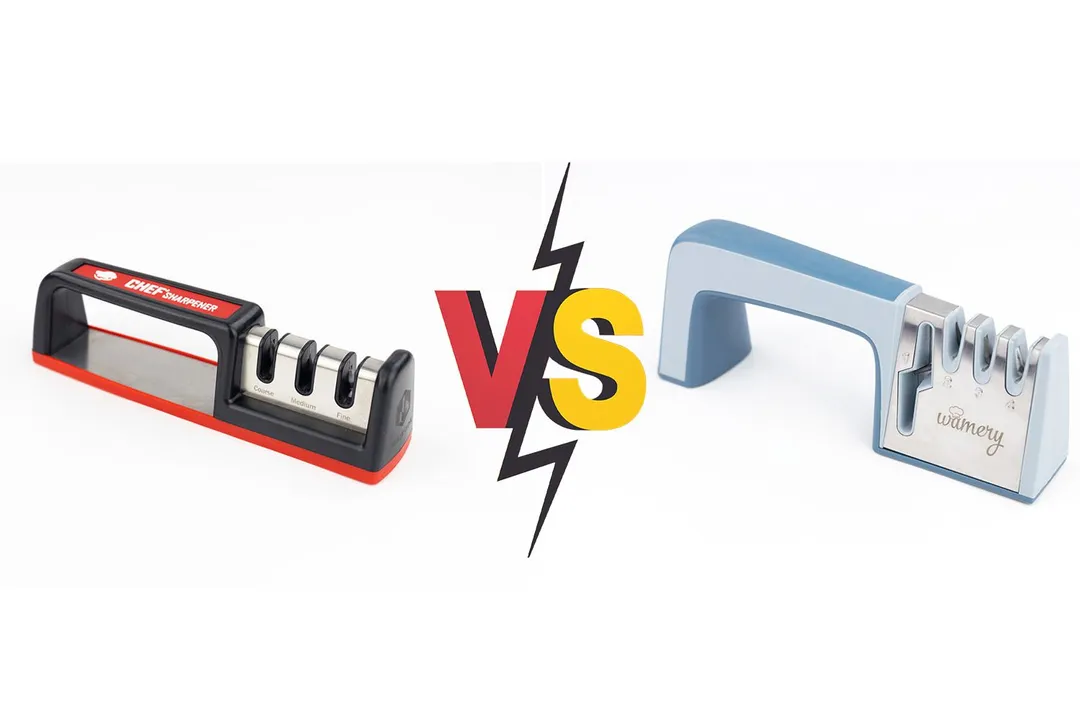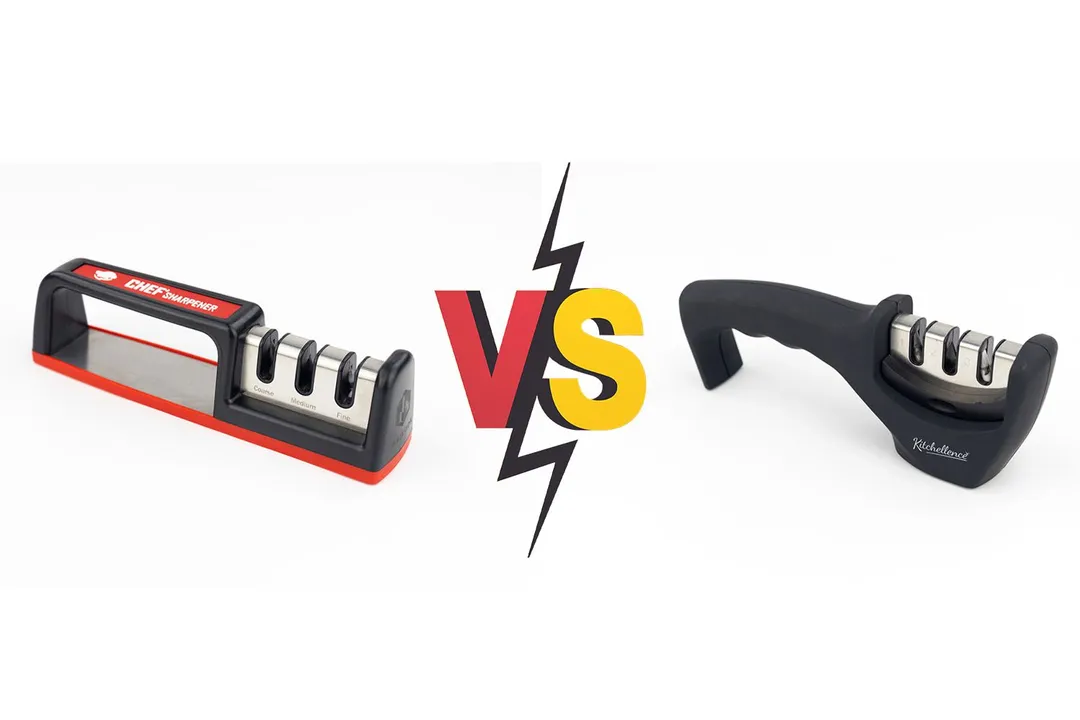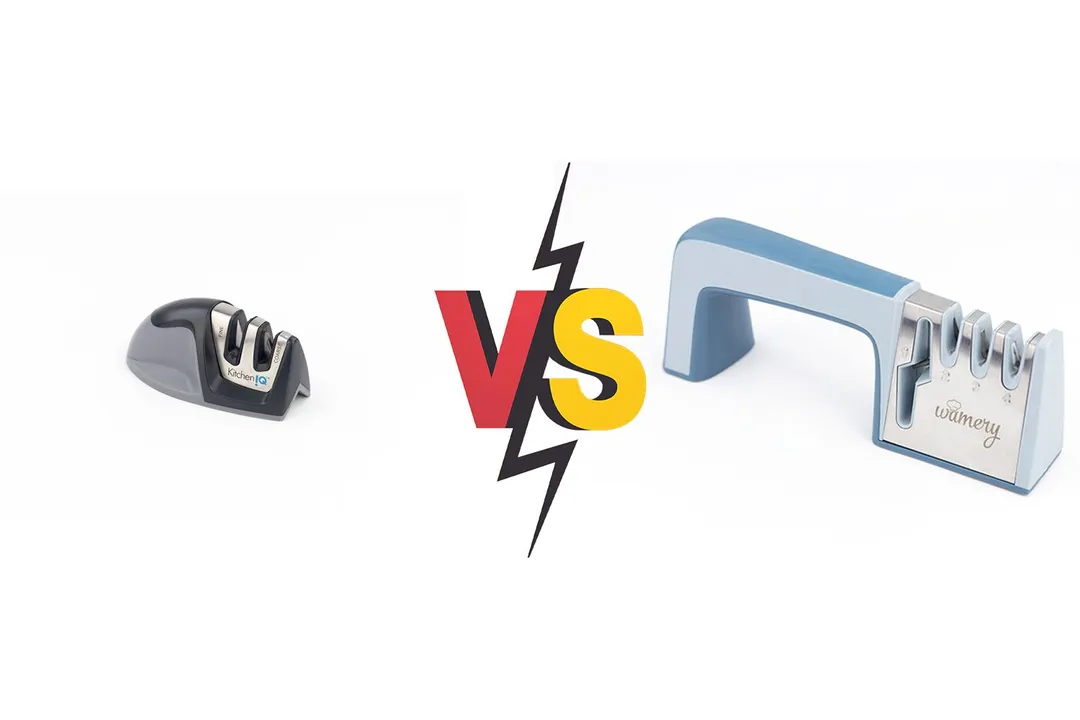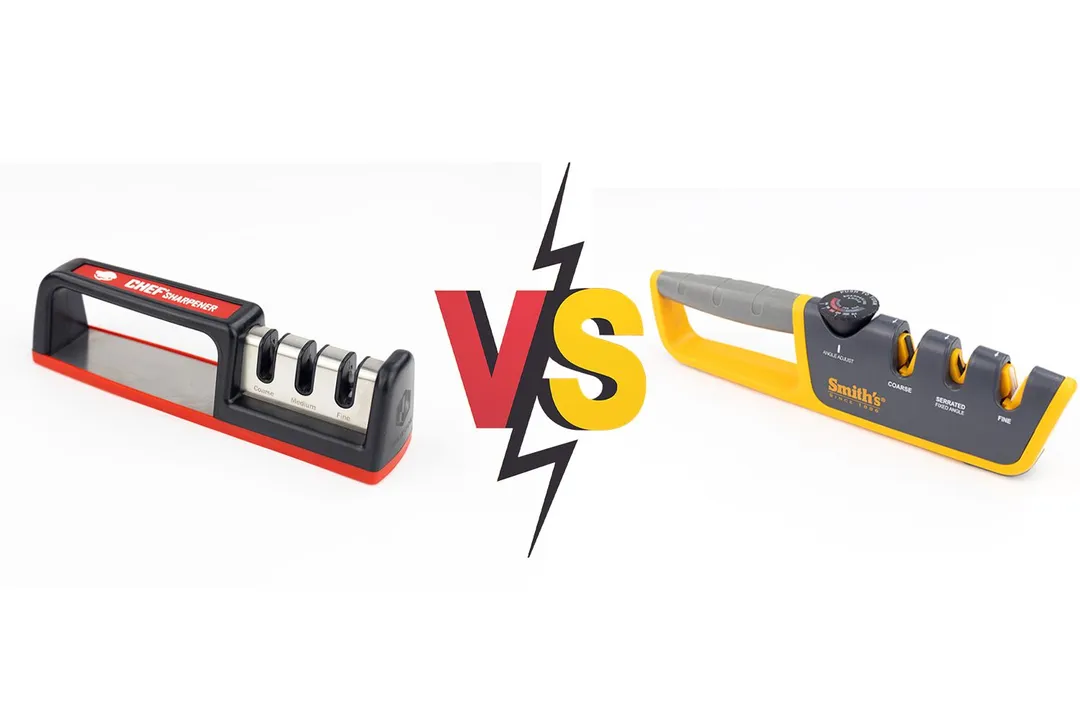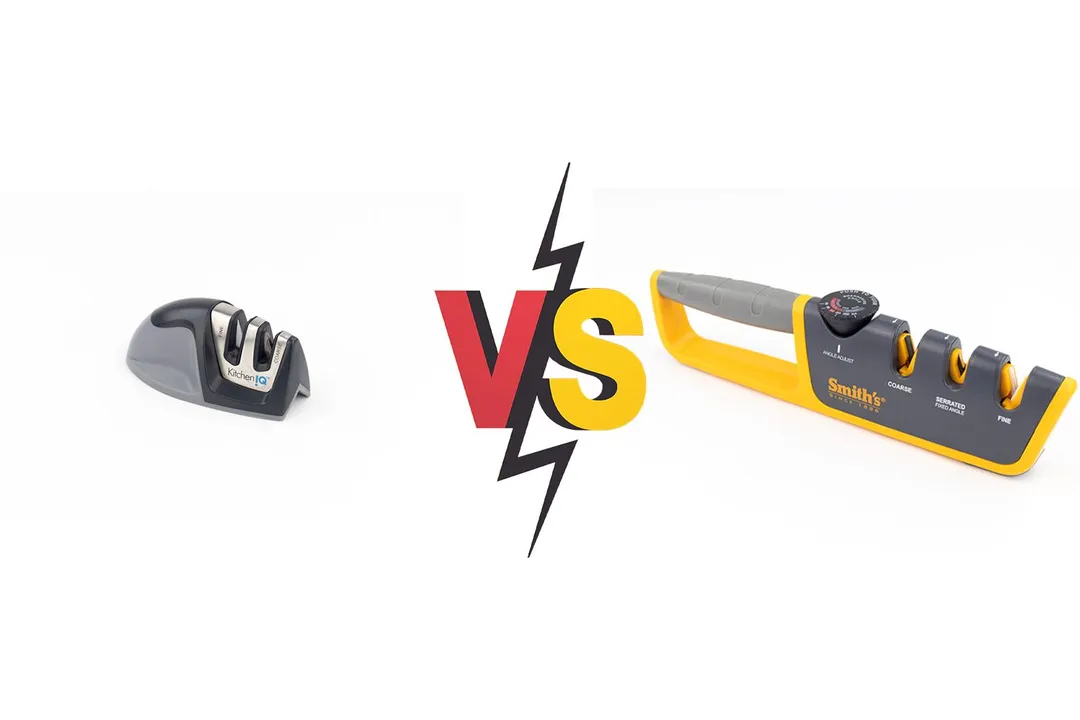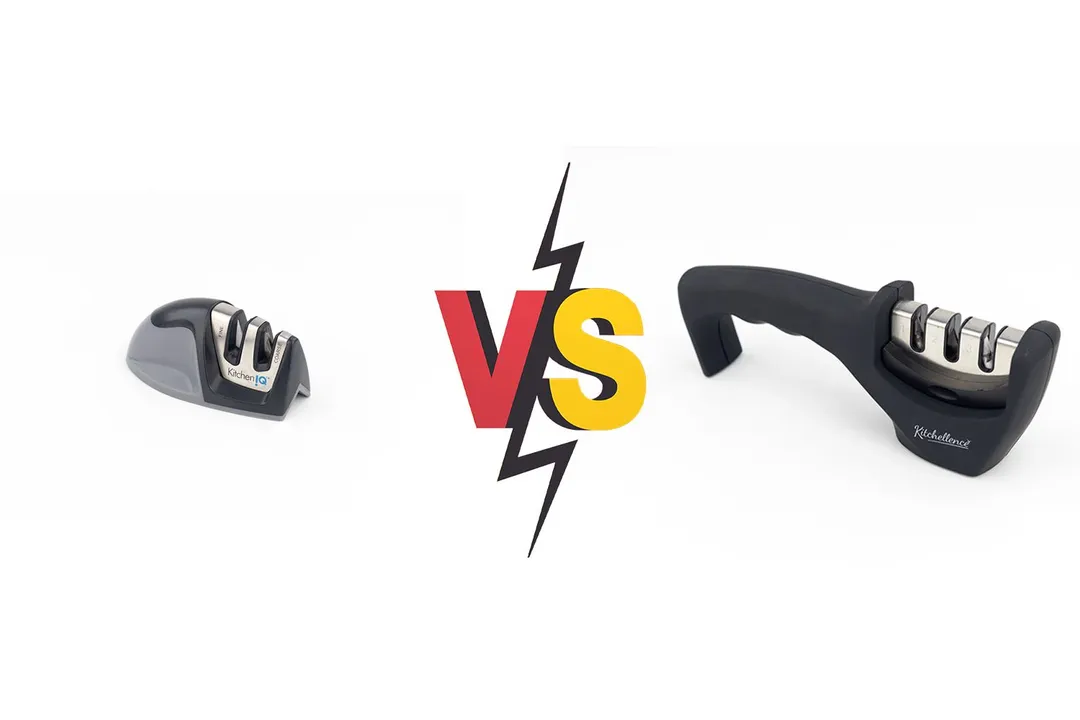Our recommendations are made independently through Research & Testing. We may receive commissions from purchases made via our links.
KitchenIQ 50009 Manual vs Cubikook Manual Side-by-Side Comparison
We compare the KitchenIQ 50009 with the Cubikook Manual Sharpener in terms of performance, ease of use, and design. Read for the details.
KitchenIQ 50009
Tested Using Methodology v1.1Cubikook CS-T01
Tested Using Methodology v1.1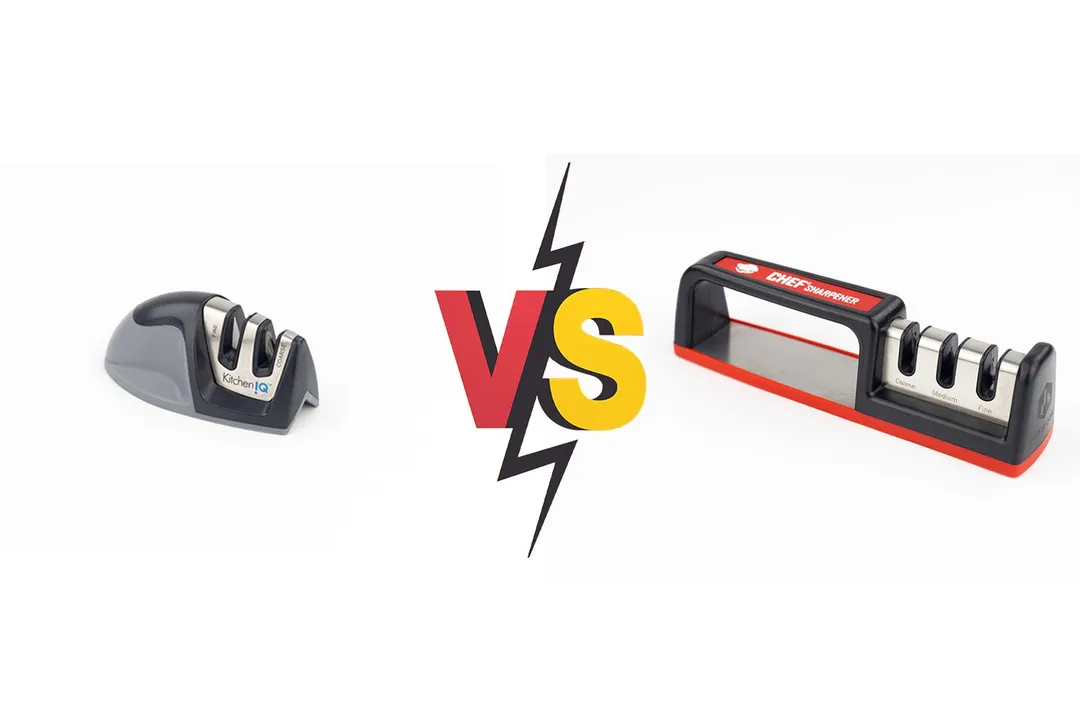
Overall Verdict
The KitchenIQ 50009 isn’t a bad sharpener, but it simply can’t compare to the Cubikook CS-T01.
While it does have a solid construction, an intuitive slot layout, and a base that’s more versatile than most others, the KitchenIQ 50009 is inferior where it matters the most: sharpening performance. It’s below average in speed and certainly doesn’t reach the Cubikook’s level of sharpness. The small size also makes it less comfortable and potentially more dangerous to use.
The Cubikook CS-T01 brings a decent level of sharpness to your knives in a much shorter time while being gentler on the knife edge. Its bigger size offers more comfort and confidence for most users. It’s not fault-free but the issues are mostly negligible. This sharpener is the obvious winner for us.
Pros & Cons
- Easy storage
- Affordable price
- Base works on both counter edge and flat surfaces
- Simple, sturdy design
- Excellent stability
- Affordable price
- Consistent sharpness
- Solid and sturdy construction
- Awkward small size
- Long sharpening time
- Small ceramic rods
- Flaky brand label
Key Specs
Where to Buy
*You help support HealthyKitchen101's product testing and reviews by purchasing from our retail partners.
Analysis and Test Results
Performance
Sharpening Time to Cut a Lemon
Material Retention


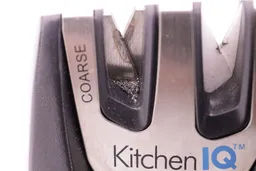
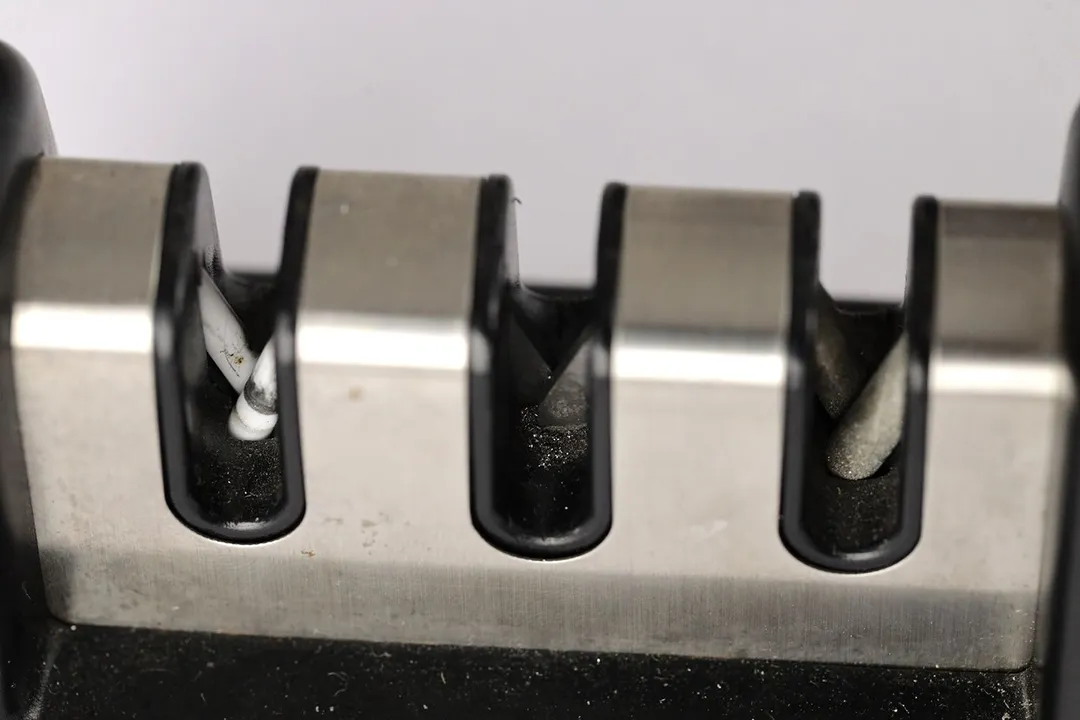
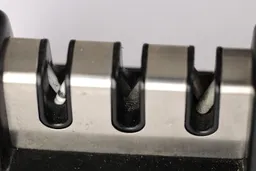

Maximum Sharpness Achieved
Edge Smoothness
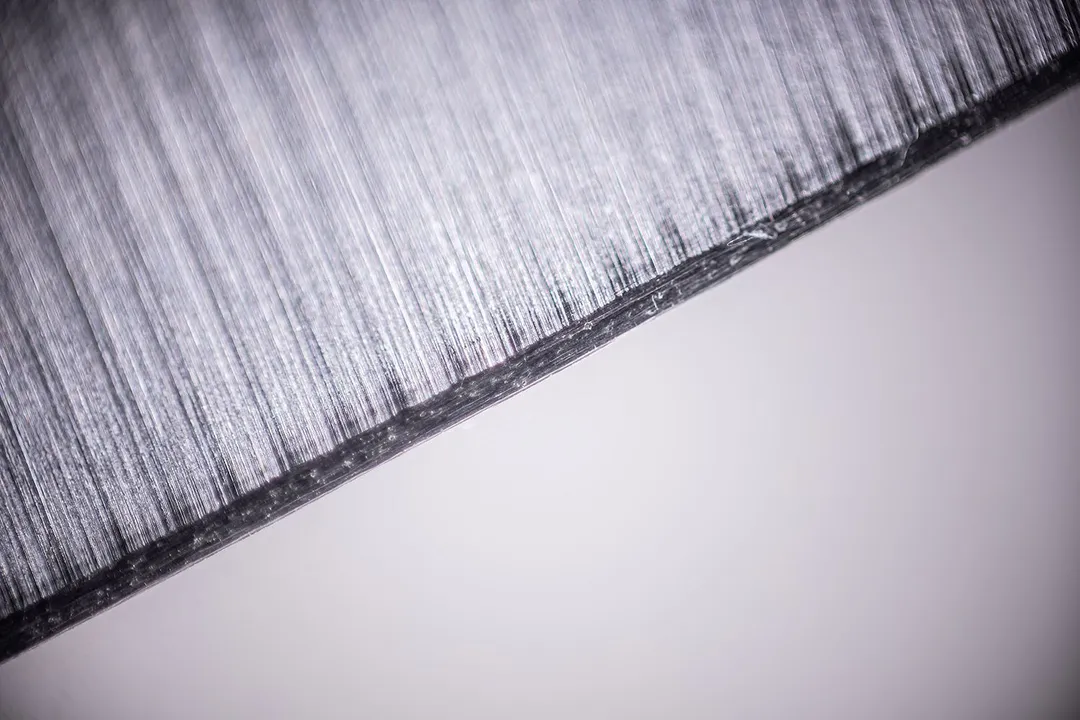

Design
In the Box
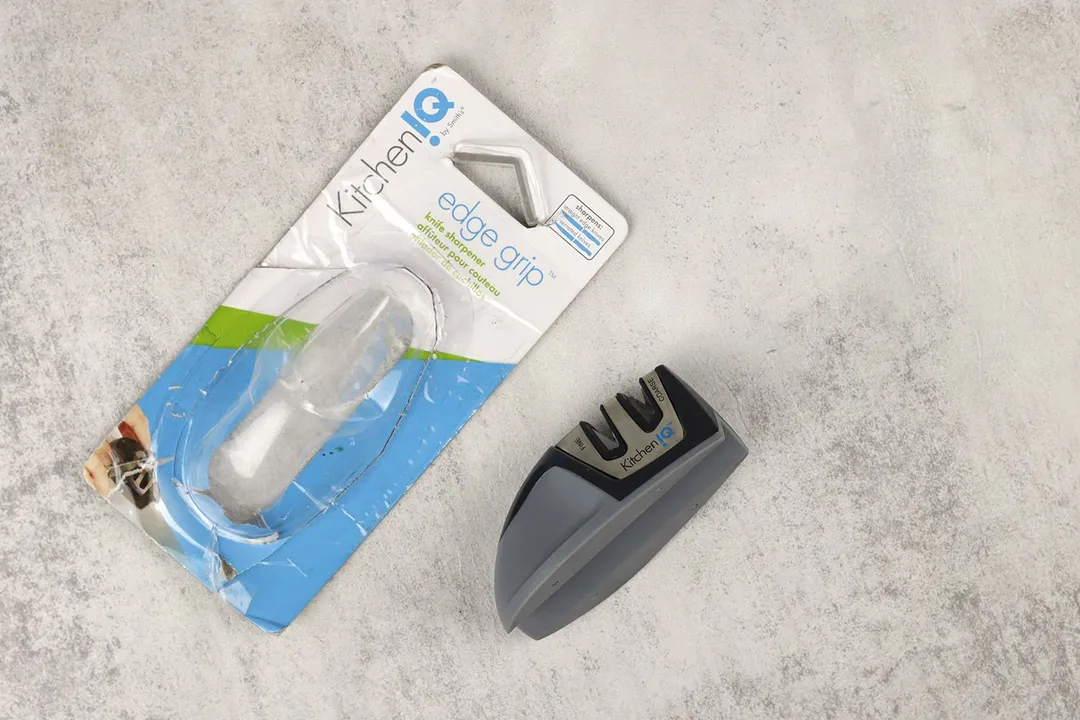
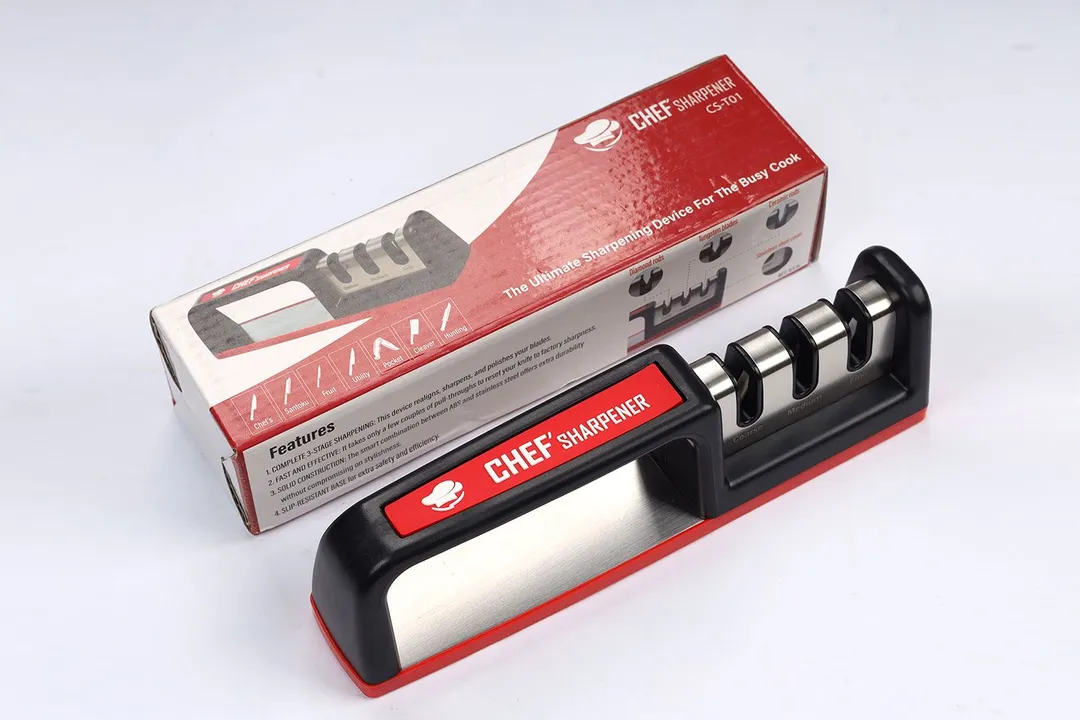
Dimensions
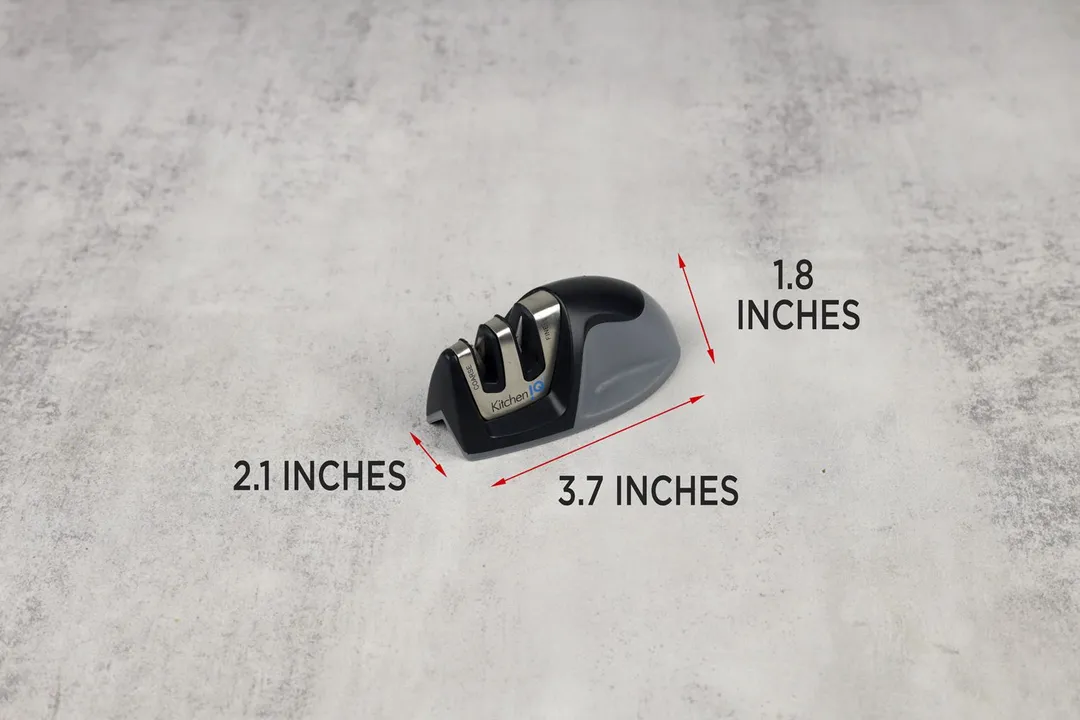
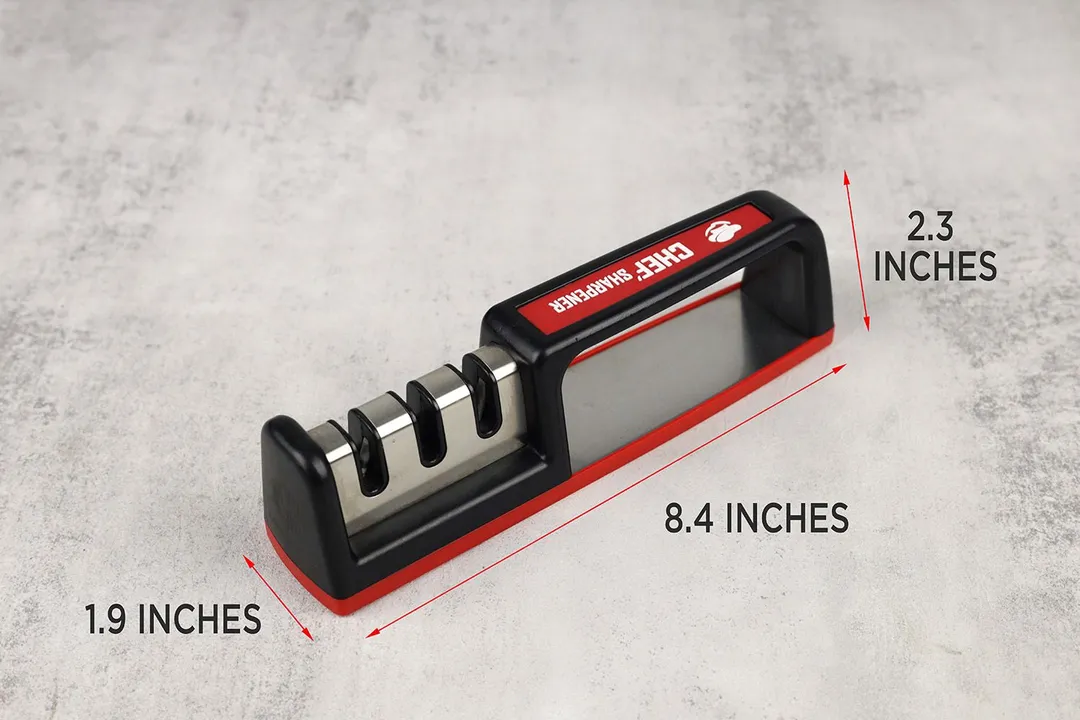
Build Quality

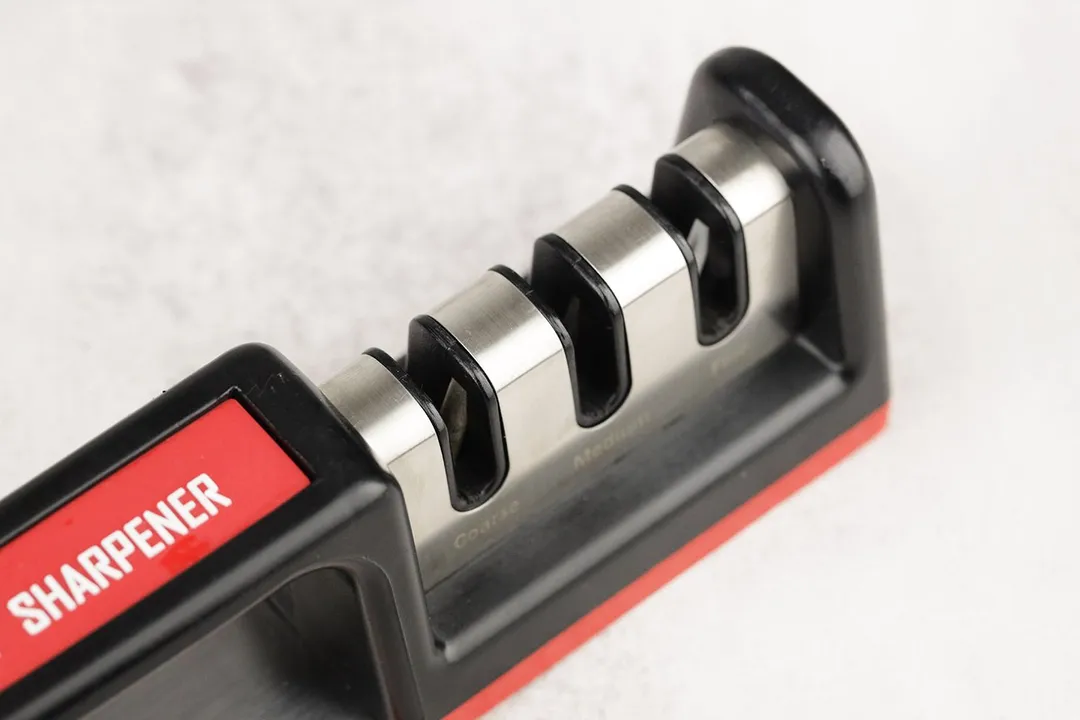
Working Section
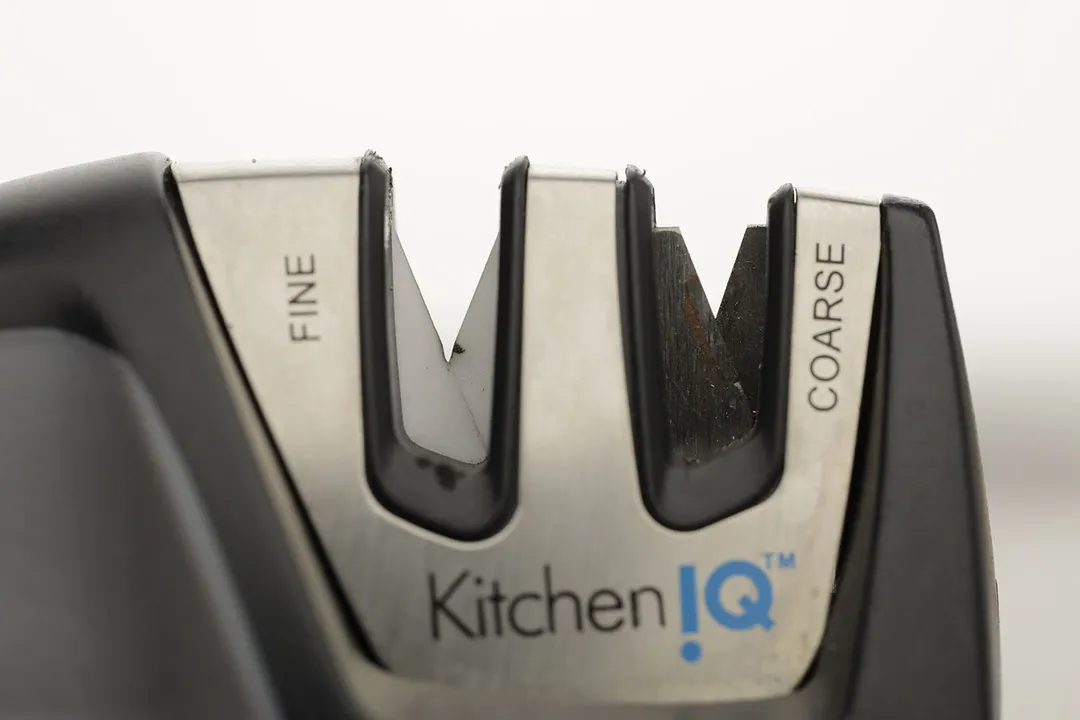
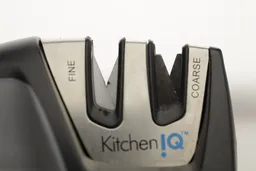
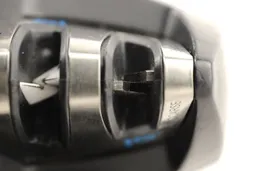
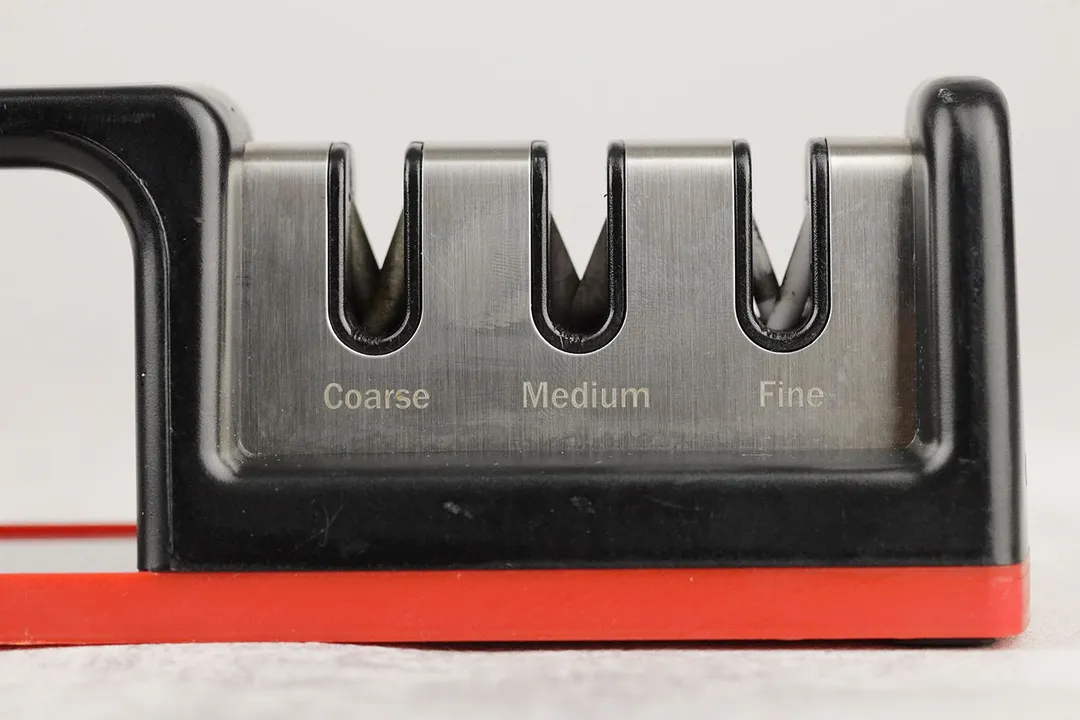
Base
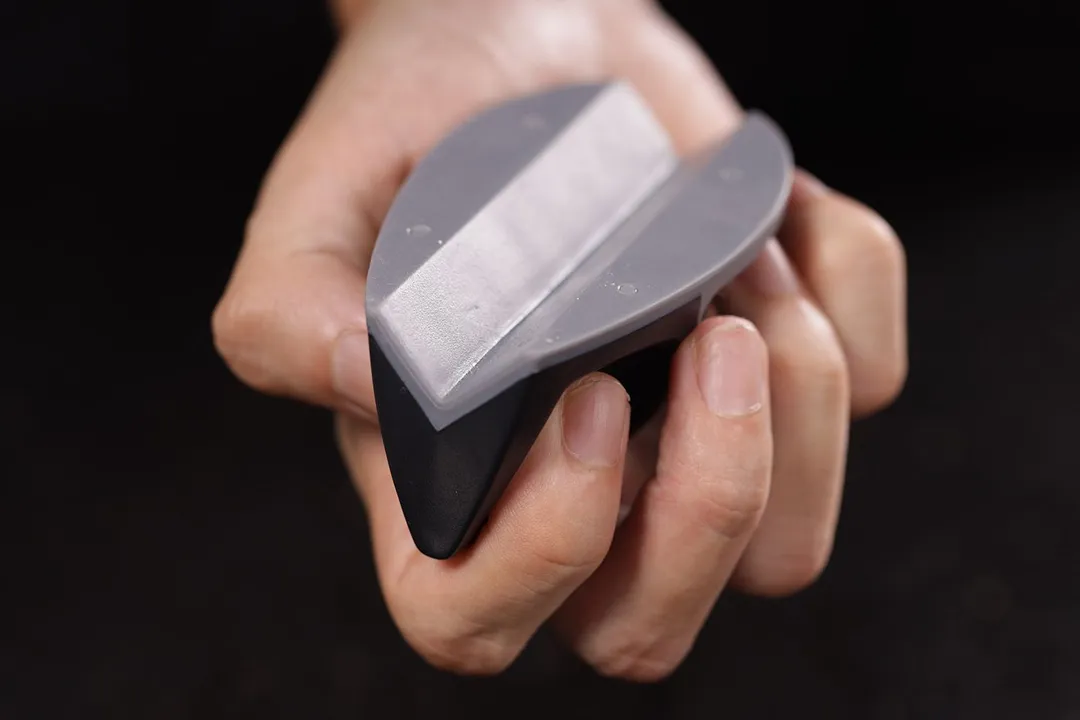

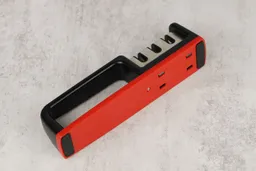
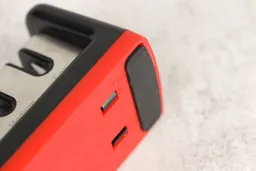
Grip
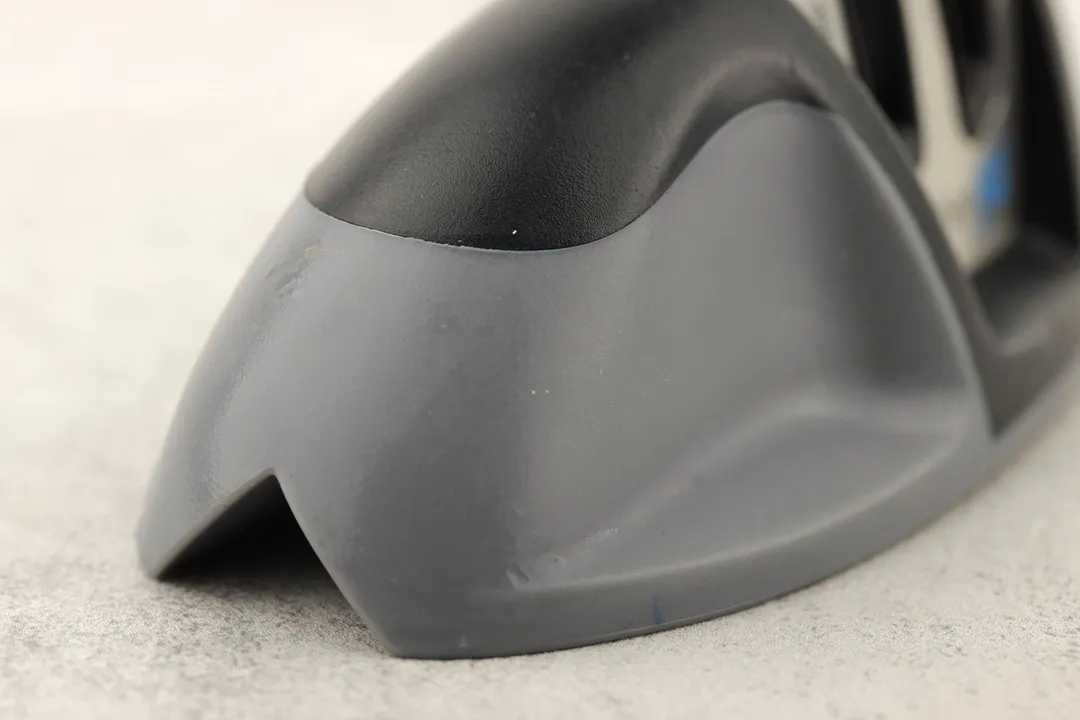
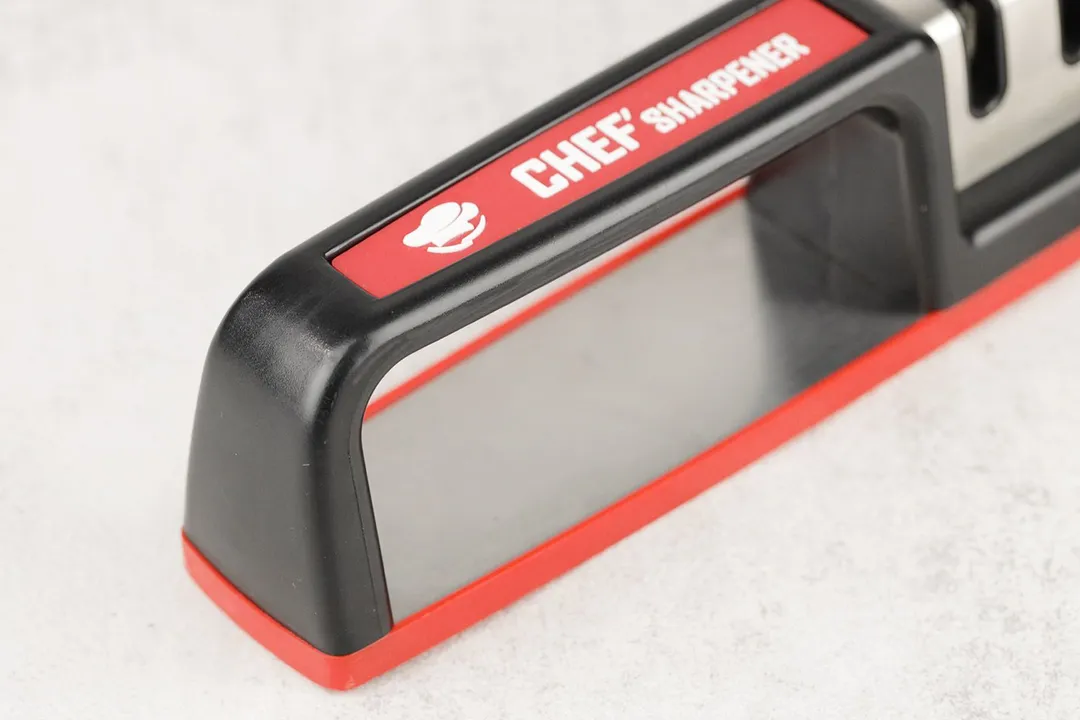
Usability
Slot Arrangement
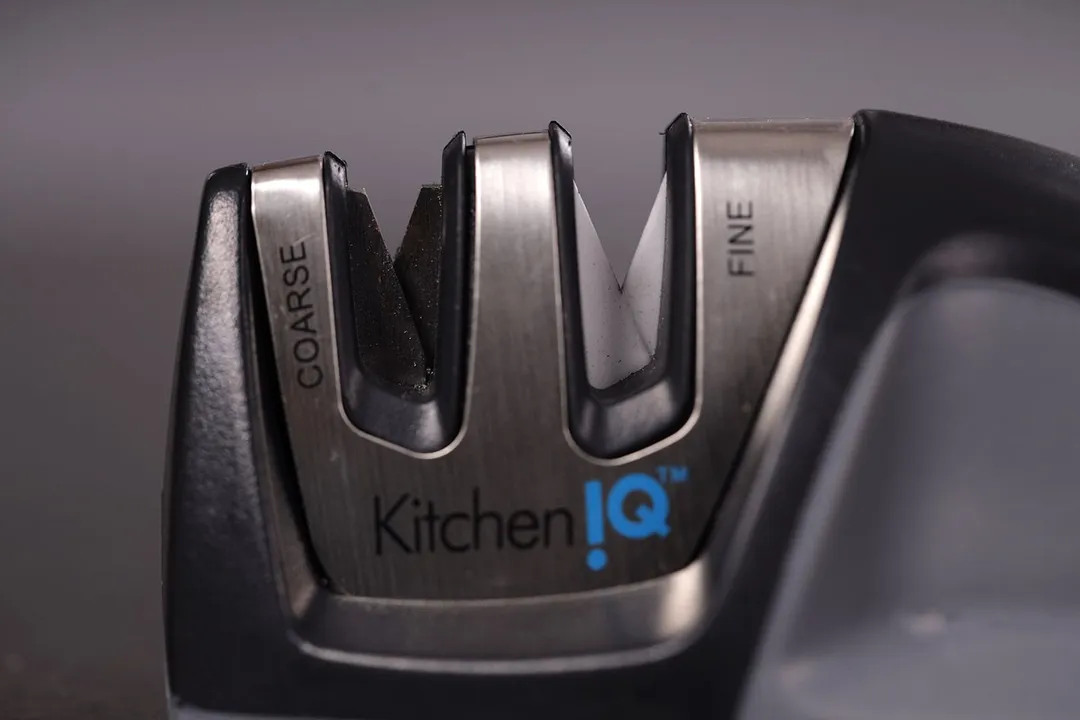
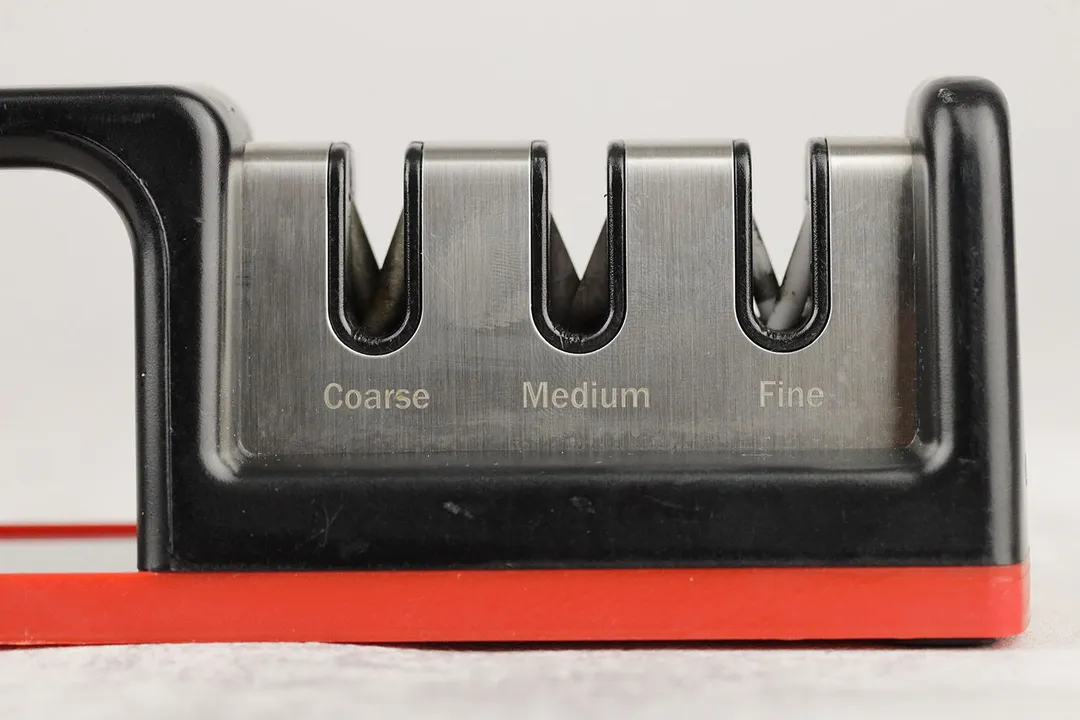
Insertion
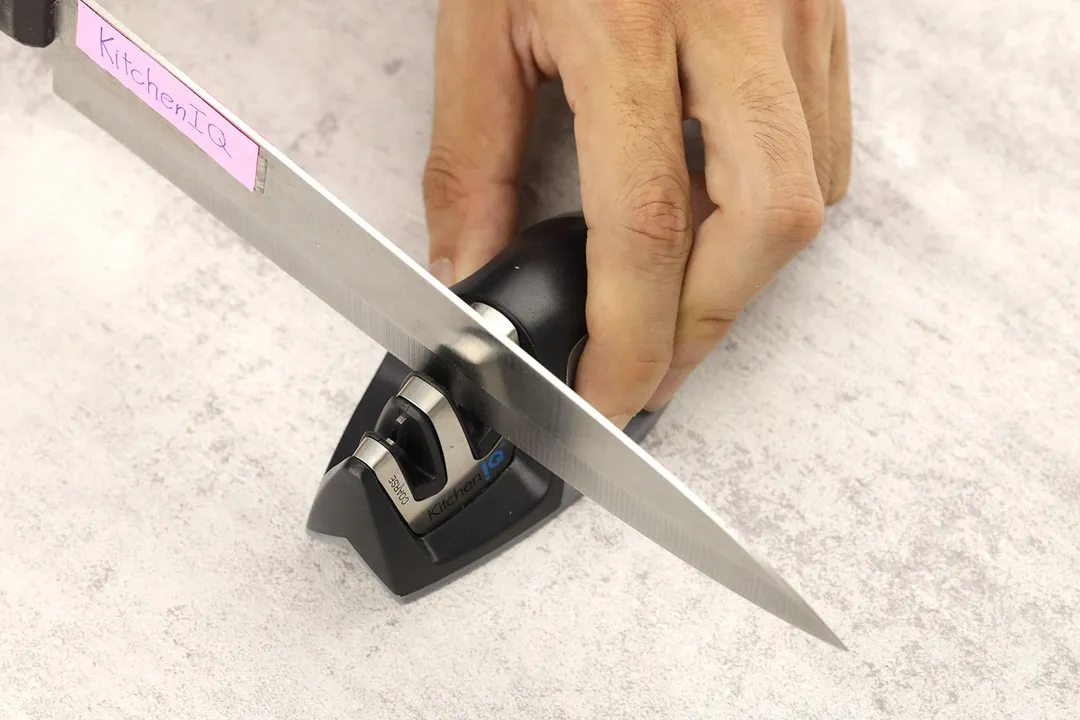
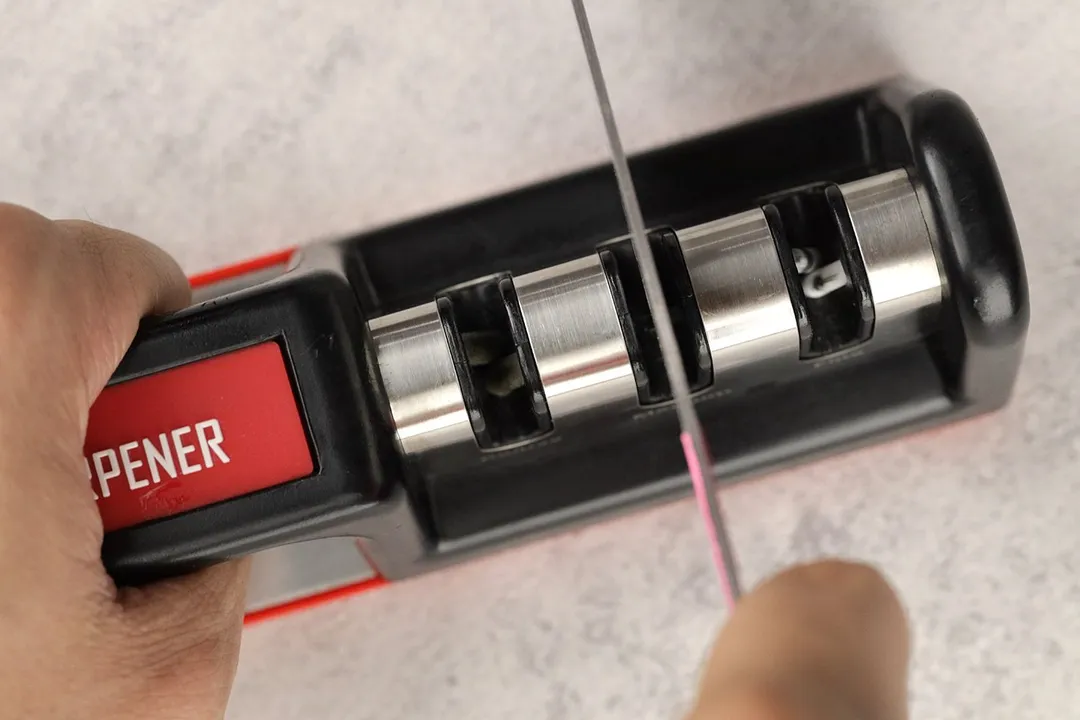
Pulling Through
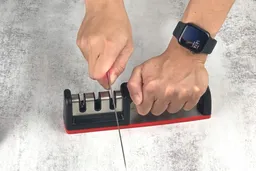
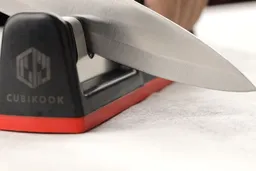
Stability on a Clean Surface

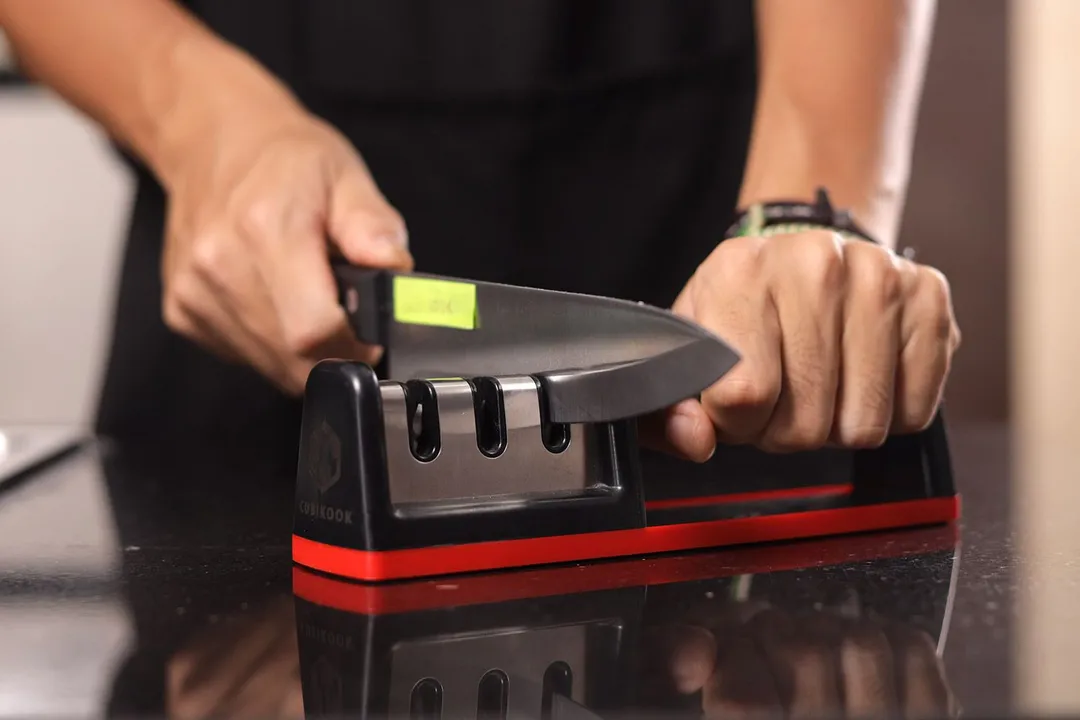
Stability on a Wet and Dirty Surface
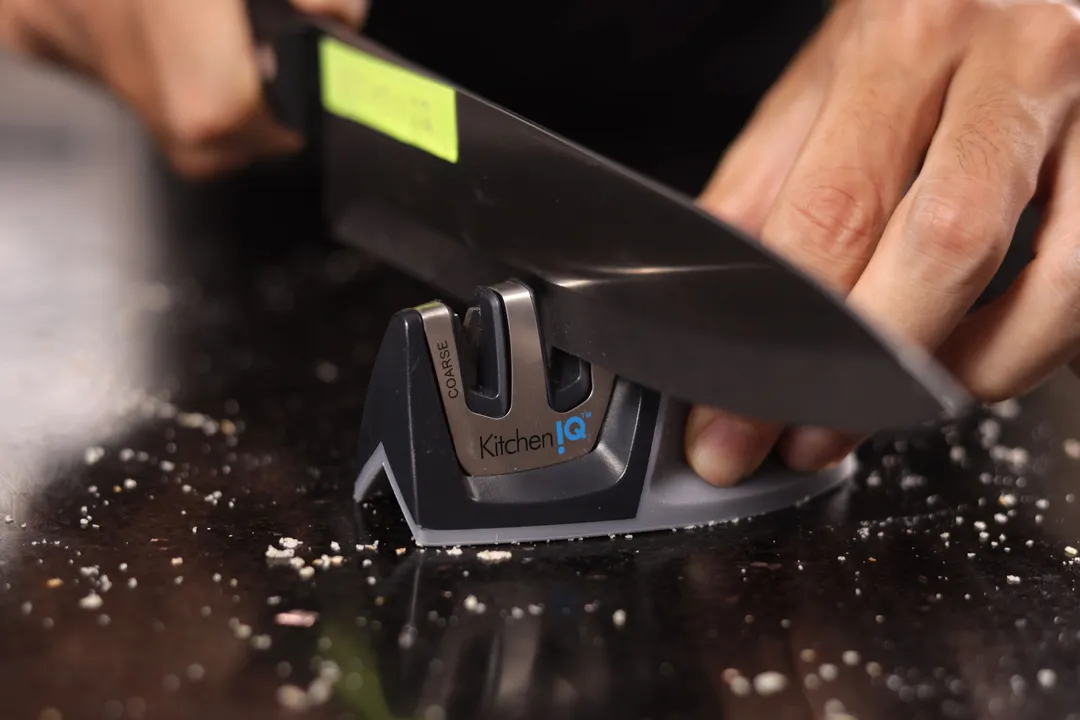
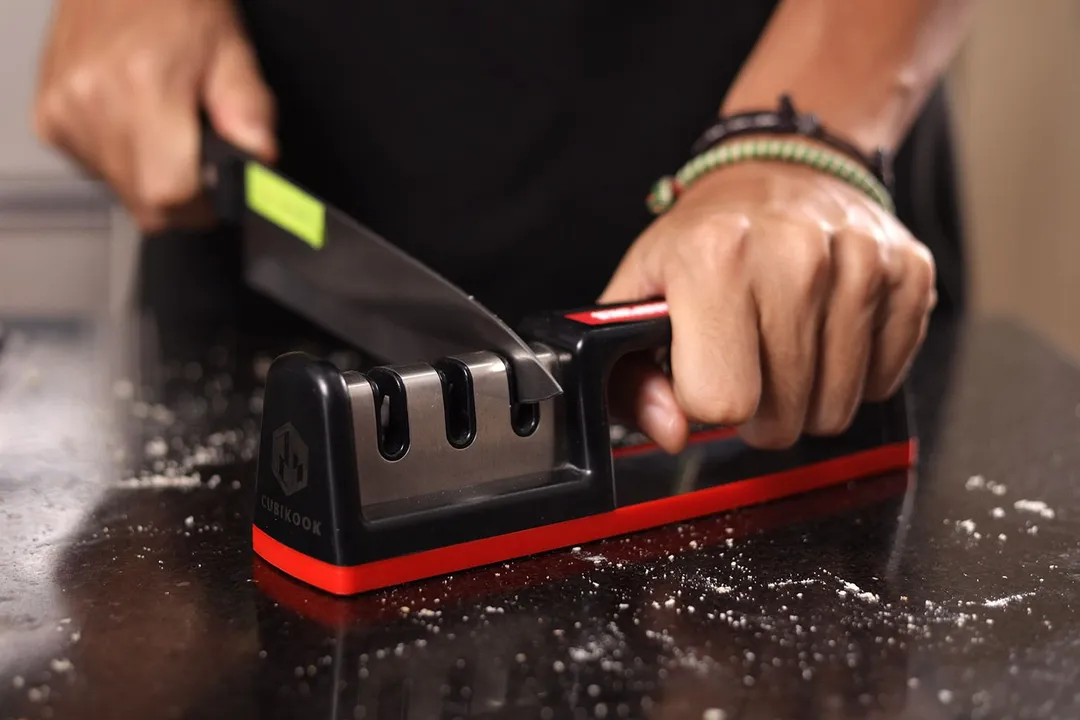
Behind the Comparison
Anh Ngo is a writer with 9 years experience at different media outlets, covering from public news and events to product testing and analysis. At HealthyKitchen101, she works across different departments, communicating closely with its network of writers, editors, and health, tech, and search engine experts to provide a meaningful and pleasant reading experience for visitors.
Lap is Head of the Research, Testing, and Review Team (RTR Team) at HealthyKitchen101.com, where he directs and supervises the testing of kitchen gadgets and appliances.
Nguyen Ntk is a graphic designer, photographer, and videographer whose philosophy centers around respecting and celebrating the beauty of reality. Through his lenses, Nguyen strives to capture the true essence of objects and events, showcasing and highlighting authentic features without distortion or exaggeration.



